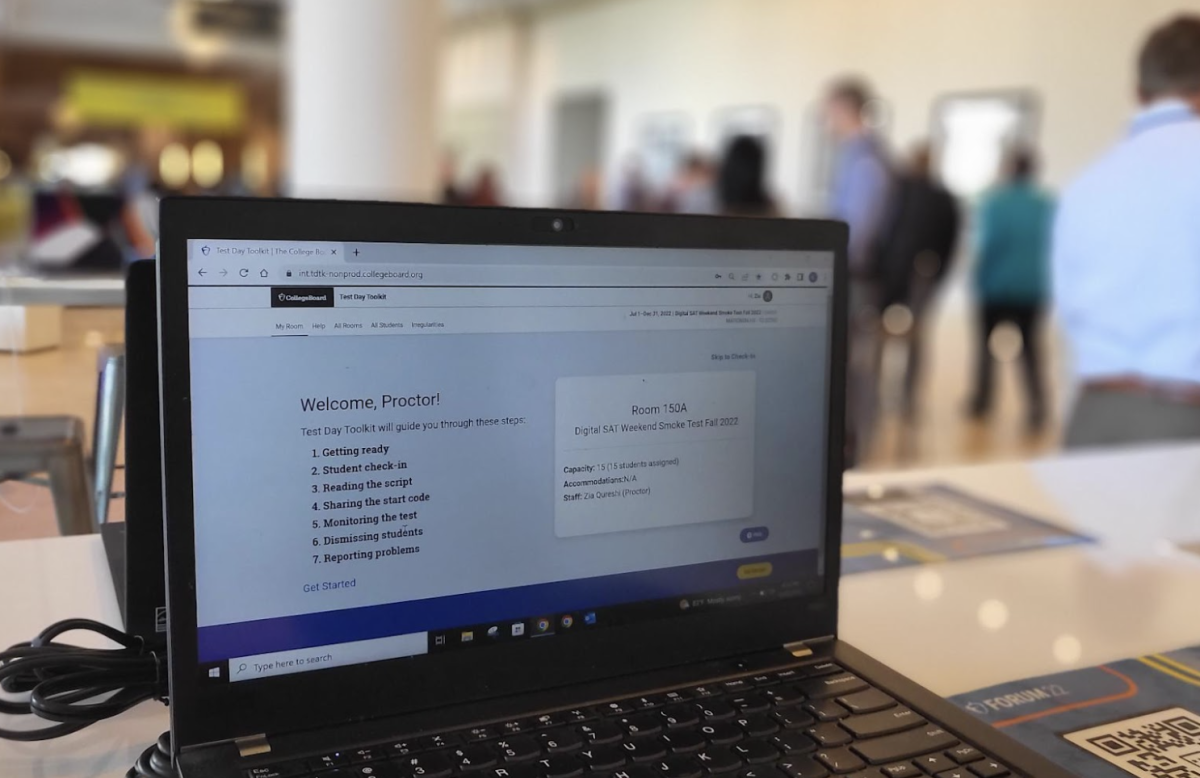When students think about the SAT, they often picture students sitting in rows, fervently bubbling in their answers with a No. 2 pencil before the proctor ends the test. This year, however, the SAT was redesigned to be taken on a digital format, reflecting our increasingly technology-reliant society. All sections are now fully online, and the only thing students need to bring on test day is a Chromebook.
The digital SAT should be welcomed at Lexington High School because it is accessible, easier to take, and has numerous advantageous features.
Although the change from paper to digital seems like a major shift, many students already have experience with such digital tests such as the MCAS and the PSAT, both of which have a similar format. Having experience with digital tests similar to the SAT has made the transition less daunting.
“MCAS was basically the same format as the new version of the SATs so it was much more comfortable to do,” Kaity Chu, a junior, said.
Additionally, the format of the digital SAT has many beneficial aspects that are not present in the paper version. For example, the passages in the reading section of the test are broken down into much smaller sections and the test is an hour shorter than the paper test. This helps students to stay focused throughout the SAT.
“The digital SAT was much shorter than the paper. The passages were much shorter and a lot more detail oriented rather than the bigger picture,” Aditi Nagaraja, a junior at LHS, said.
Other positive features of the digital SAT include the built-in tools that students can use during the exam.
“You had a timer that was on your screen so you could know how much time you have left. You could also hide the timer if you wanted to. And then we got to have a calculator for all sections of math and it was always there. And Desmos was always there, so you could always use it,” Chu said.
Despite some of the positive reviews of the digital format, other students feared that the transition between the two formats was going to be difficult.
“I was not super enthusiastic about switching. I knew the online format would be super different, and there aren’t as many resources to study with,” Nagaraja said.
Limited resources make it harder for students to know what to expect on the test. Due to the digital version’s differing features, it is crucial to practice before taking the test to be able to navigate through it smoothly when the time comes.
In addition to worries that there would be more difficult math and reading questions, students were concerned about potential technology issues that could arise while taking the test.
“I was really worried about the WiFi or the application not being able to support so many devices. When I went into the test, I was mentally prepared for technical difficulties,” Nagaraja said.
However, despite how daunting the change between the paper and digital format of the SAT may seem, the digital SAT and its uniquely advantageous format should be welcomed by students at LHS. In a world where pandemics can shut down schools and technology supports everyday life, the digital SAT is a reflection of changing times, offering opportunities of improvement in the future.

